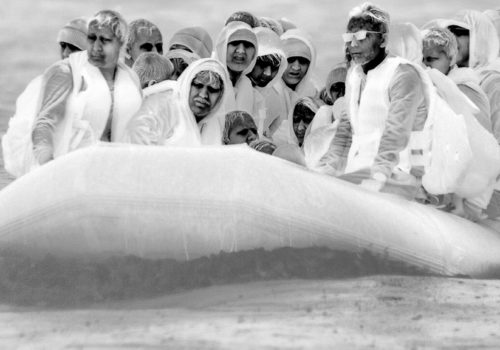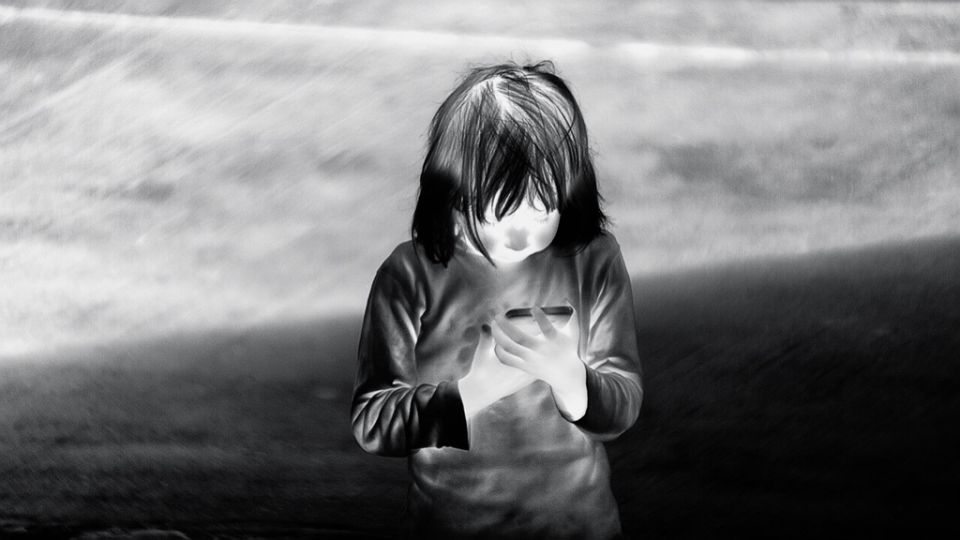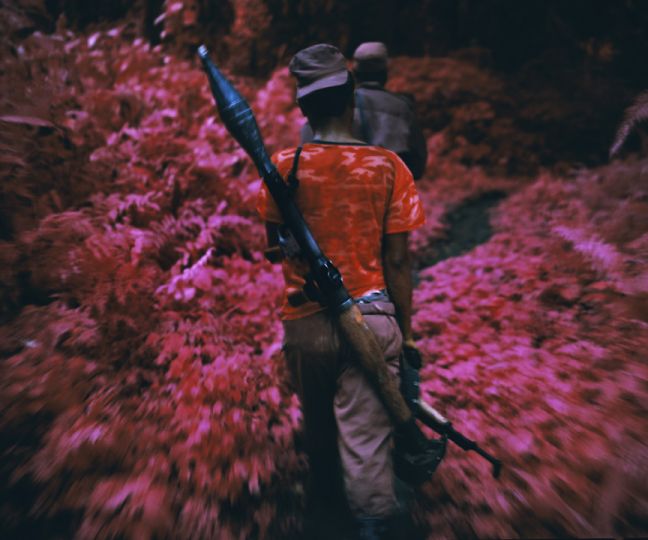The Eye thinks that the Richard Mosse’s “Heat Maps” exhibition at Jack Shainman is important. Whenever an event, especially in the art world, is deemed to be important, the Eye is skeptical and probably avoids it. Not this one.
Mr. Mosse, in his ongoing investigation into how and what we see, is diligent, resourceful and very, very smart. MacArthur grant material.
He also has a fierce sense of injustice and outrage. He has consistently and ably managed to conjure up stories from horrific places, from Iraq after the fall of Saddam Hussein to the Syrian borders today. His last major body or work, ”Infra-Red Landscapes”, pinkish psychedelic, candy colored depictions of Eastern Congo was achieved with atypical film.
In this new series, he rather brilliantly takes what has to be awkward, unpoetic equipment and transforms nightmares into surreal panoramic multifaceted tales which slowly unfold as you learn to “read” the material. Mosse is “seeing’ in an extraordinary way with equipment that is heat sensitive rather than using what Fox-Talbot called “the agency of light”. This is “thermography”.
This would all be easy to dismiss if the pictures were not as solid and exceptional as they are.
In the galleries, you are met with a more than half dozen epic-sized black and white horizontal works. The Eye’s was initially reminded of Sohei Nishino’s collaged city scape “dioramas”. These wide views are the core of the show. There are smaller detail pieces which are the basis of a smart looking book “Incoming” from Steidl, but it is the big stuff that impresses. The monumentality stuns you, and the detail captivates you. You look from a distance then draw closer in to study.
These appear to be black and white images printed as color – digital C-prints – on a metallic paper. The blacks are flat and dense; the whites gleam. The printing on a metallic base seems to yield odd mysterious hues too, either in the print itself or in the reflection. The crazy thing is that although you can make out the settings – it takes some time – the faces and figures appear to be pen and ink drawings within the photographic image. They aren’t sketches, but the report the equipment gives transforms the identities. It suggests, not represents. The camera does not interpret flesh sharply. People glow, objects flare.
These are journeys into Breughel-like dystopian hells.
The “camera” which is classified as a weapon, is a sophisticated component in surveillance. With it, Mosse can “see” very long distances. like a bat hears, “echolocation”. Again the camera is heat sensitive.
Mosse’s statement accompanying the show (and in the book) is a fascinating read full of great specifics, such as the camera is operated by one person while a second makes editorial decisions on a converted X-box gaming control. It’s not your I-Phone.
“I used a military-grade camera designed for battlefield awareness and long-range border surveillance in an attempt to engage and confront the ways in which many in the west, and our governments, represent – and therefore regard – the refugee’. This thermal camera, which is produced in the EU by a multi-national weapons company (…) was not designed for storytelling, and was never intended to be used aesthetically”.
“We wanted to use the technology against itself to create an immersive, humanist art form, allowing the viewer to meditate on the profoundly difficult and frequently tragic journeys of refugees through the metaphors of hypothermia, global warming, border enforcement, mortality, and what the philosopher Giorgio Agamben has called the ‘bare life’ of stateless people.”
You will never forget.
W.M. Hunt
W.M Hunt is a photography collector, curator and consultant who lives and works in New York. He is a professor at School of Visual Arts and is on the Board of Directors of the W. Eugene Memorial Smith Found. His book entitled “The Unseen Eye” (published by Aperture) and focusing on his personal collection is one of the most intriguing compilations of photographs.
Richard Mosse, Heat Maps
February 2 – March 11, 2017
Jack Shainman Gallery
513 W. 20th St
New York, NY 10001
USA


















